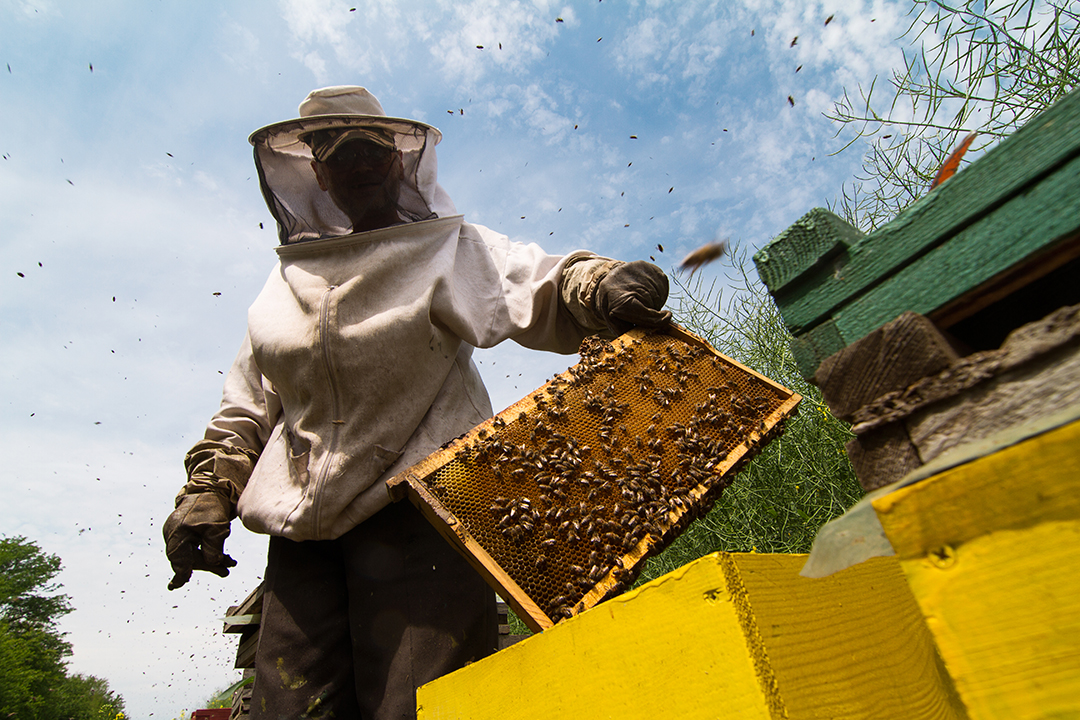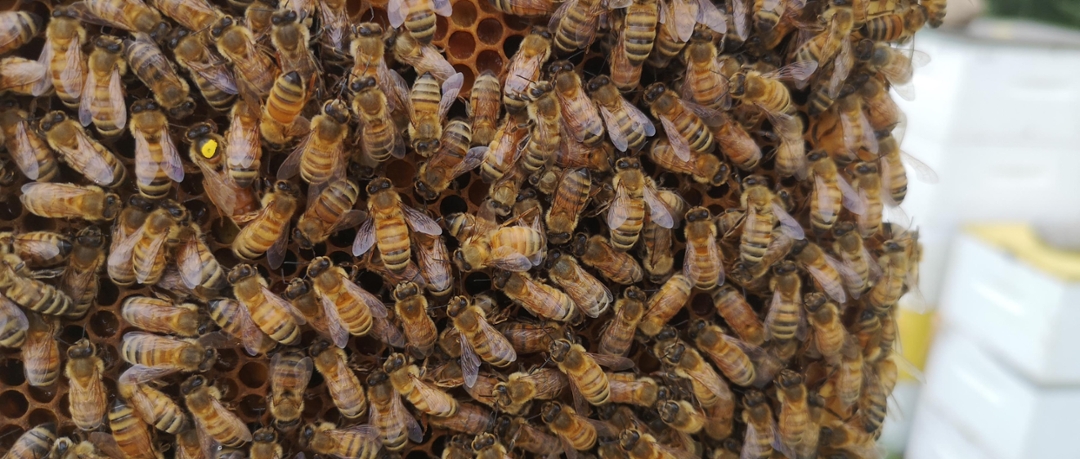
Habitat loss creates stress for honey bees
While society is coping with the stress related to a pandemic, honey bees and other pollinators are going through another problem — the stress associated with habitat loss.
By Melanie Roulin“They [pollinators] need a place where they can live without being killed and where they can eat without being poisoned,” says Graham Parsons, a pollinator biosecurity specialist with the Saskatchewan Ministry of Agriculture.
Insect pollinators play a key role in transferring pollen from one plant to another. Well known pollinators include bees, certain flies and butterflies.
The pressure on agriculture to continually increase production and efficiency is creating a disconnect between the needs of pollinators and the economics of agriculture.
Parsons points to canola crops as an example: a well-grown canola field is excellent for the farmer, but the practice of growing one crop type in a particular area (a monoculture) creates some problems for pollinators. While canola has great pollen quality for bees, the crop only blooms for three weeks. Outside of that three-week period, canola field are like deserts for pollinators.
Parsons, who grew up on a commercial bee operation, explains that pollinators rely on their habitat for three basic requirements: a place to live, a place to eat and a place to rear their young. If one or all of these factors are absent or scarce, that can result in the direct or indirect death of pollinators.
Direct impacts would include starvation, while the increased susceptibility of pollinators to diseases is considered an indirect impact of habitat loss.

For example, Nosema disease and European foulbrood disease are infections that “prey” on the weak. Parsons explains that if pollinators have access to good quality nutrition, they can overcome the burden of low to moderate levels of Nosema disease — an illness caused by small microsporidian parasites that live in the digestive tract of honey bees and other pollinators.
However, if they are under nutritional stress, Nosema infection affects the bees’ ability to soak up the nutrition they need to maintain health.
Similarly, European foulbrood (EFB) “bacteria can outcompete the infected larvae for nutrition,” says Ivanna Kozii, a PhD candidate in the Department of Veterinary Pathology at the Western College of Veterinary Medicine (WCVM).
EFB, which is caused by the bacterium Melissococcus plutonius, infects the gut of the larvae and usually strikes when pollinators are short on food or stressed. It has become a topic of interest to beekeepers in North America as the occurrence of the disease changes.
“It is important to understand where this change is coming from and what are the new factors causing the higher than usual EFB rates,” explain Kozii, whose research work focuses on honey bee health.
Beekeepers can reduce pollinator stress through supplementation and preventive disease treatment. Parsons suggests supplementing bees’ food supply with sugar syrup or some kind of carbohydrate. Pollen patties are another good option: made with real pollen or a pollen substitute mixed with some sugar, these wafer patties will help to reduce the nutritional stress on bees.
Since disease can overwhelm honey bees that are already stressed, Parsons recommends “keeping your disease down so the bees aren’t stressed, so they don’t have to deal with both nutrition stress and disease stress.”
Agricultural landowners can help to reduce stress for honey bees by improving and protecting pollinator habitat. For example, leaving tree islands and wetlands in agricultural fields provides excellent habitat for pollinators, says Parsons. He also suggests that producers plant strips of pollinator habitat as part of their annual crop planning.
While there are advantages to working in obstacle-free fields, farmers may have more to gain by integrating pollinator habitat in their annual production plans and seeing boosts in their crop yields — thanks to the work of honey bees and other pollinators.
Visit BeeLine 2020 for more information about recommendations for landowners.
Melanie Roulin of Stonewall, Man., is a second-year veterinary student at the Western College of Veterinary Medicine (WCVM) whose research position was supported by the USask Student Research Assistant (USRA) program. Her story is part of a series of articles written by WCVM summer research students.
